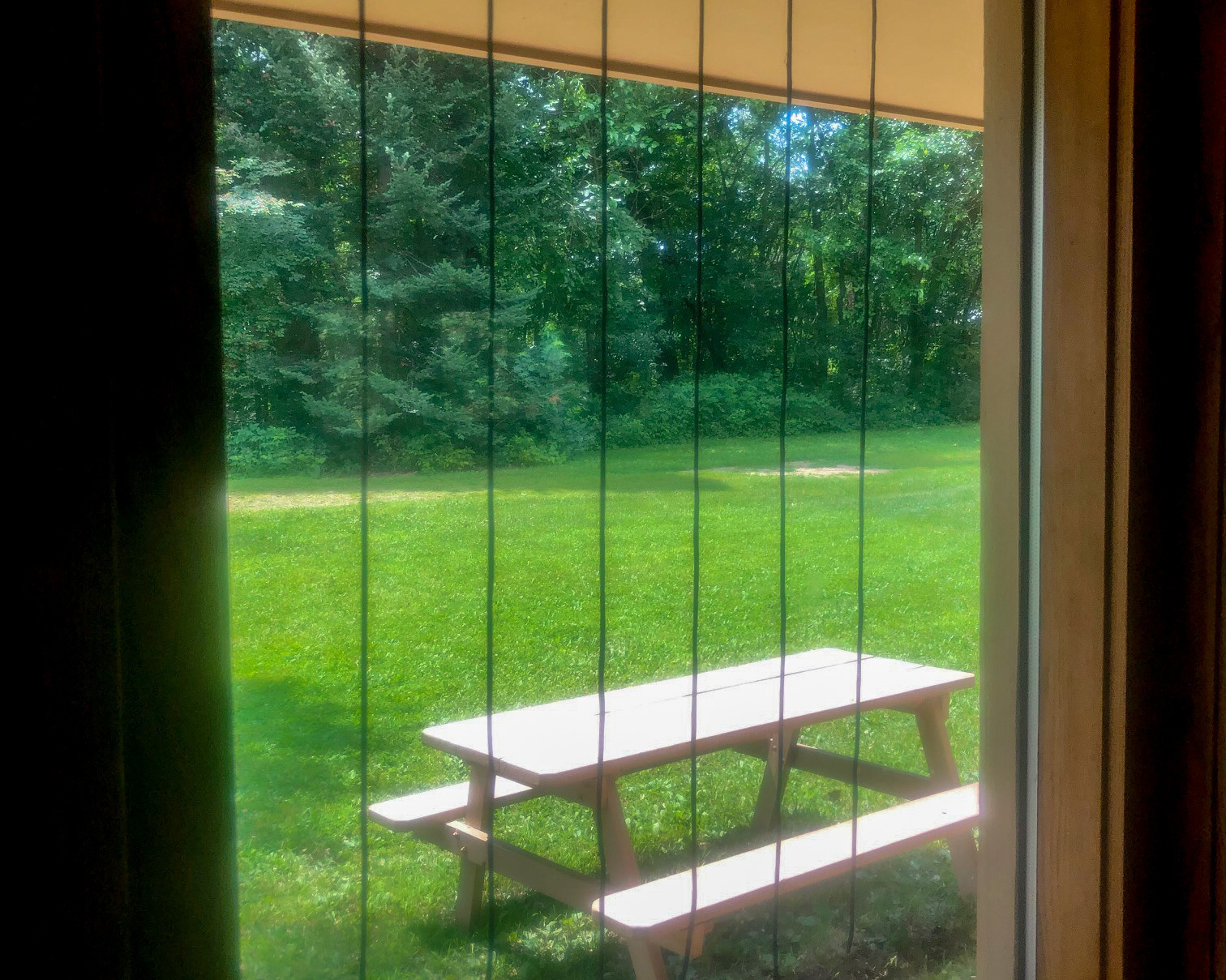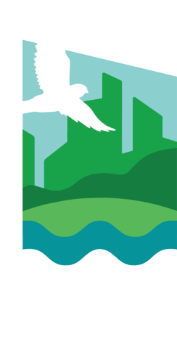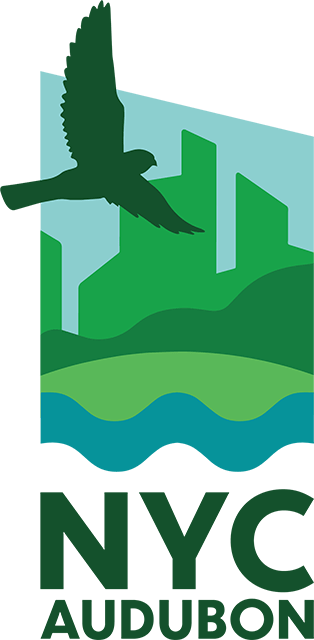Bird-Friendly Glass on Governors Island
An image of two windows of NYC Audubon's former seasonal environmental center in Governors Island's Nolan Park treated by window film.
Effects of Glass on Birds
Birds do not detect clear glass as a barrier, nor do they understand reflections in glass. When they see habitat or sky either reflected in glass, or through it, such as in a courtyard, the birds collide at full speed. Many die on impact. New York City, with its skyscrapers and huge swaths of reflective glass, poses a particular threat to over 100 species of migratory birds, some of which are experiencing long-term population declines. Glass is the second-largest direct cause of bird mortality in the United States (second only to free-roaming domestic cats). Research indicates that across the entire United States, 365 million to 1 billion birds are killed annually in collisions with windows. However, preventing collisions can be as simple as installing bird-friendly patterned markers that make the glass visible to birds, even though in many cases, it is imperceptible to humans.
Preventing Collisions on Governors Island
As part of our residence on Governors Island, we made our former seasonal home in Nolan Park a model for bird-friendly building design. We’ve created a crucial, real-world display of bird-friendly retrofit options using temporary, external window films, tapes, paints, and more. Our display both reduced bird collisions at the building and served as an educational and outreach tool, providing examples for Island visitors considering bird-friendly design.
Learn More about the Methods Displayed on Governors Island
%20(1).jpg)
An image of two windows of NYC Audubon's former seasonal environmental center on Governors Island's Nolan Park treated by window film.
Window Film
Most patterned window films were initially intended for use inside structures as design elements or for privacy.
Now, outside surface applications intended to reduce bird collisions have proven highly effective and popular. Films depicting dots or other patterns can be applied to glass surfaces without damaging the glass. In some cases, dot patterns are hardly visible, but when designed according to the 2 x 2 rule, patterns on glass can also prevent bird strikes. Patterns on the outside surface of glass deter collisions most effectively because they are always visible, even with strong reflections
Now, outside surface applications intended to reduce bird collisions have proven highly effective and popular. Films depicting dots or other patterns can be applied to glass surfaces without damaging the glass. In some cases, dot patterns are hardly visible, but when designed according to the 2 x 2 rule, patterns on glass can also prevent bird strikes. Patterns on the outside surface of glass deter collisions most effectively because they are always visible, even with strong reflections
%20(1).jpg)
An image of a window of NYC Audubon's former seasonal environmental center on Governors Island's Nolan Park treated by window tape.
Window Tape
Tape markers are probably the most familiar solution to bird collisions. They can be very effective if applied following the 2 x 2 rule on the outside of glass, but in general, they must be replaced frequently, at least annually. Tape is generally cost effective and quick to apply, but most household tapes don’t stand up well to the elements. Tape intended to last for several years on the outside of windows has become commercially available (by Feather Friendly, CollidEscape, Solyx, and other brands) and is effective when applied following the 2 x 2 rule.
.jpg)
An image of a window pane of NYC Audubon's former seasonal environmental center on Governors Island. It is decorated with images of marine life using acrylic paint.
Acrylic Paint
Acrylic paint (available at most art supply and craft stores) applied free-hand to the window’s exterior with a brush, sponge, or stencil is an easy way to reduce window collisions. Acrylic is long-lasting, even in rain, but comes right off with water and a glass scraper.

An image of a window with parachord curtains on its exterior.
Paracord Curtains
Paracord curtains (known by the brand name Acopian BirdSavers) consist of 1/8 inch diameter ‘paracord’ hanging four inches apart on the outside of the window. The word ‘paracord’ is an abbreviation for ‘parachute cord’ and is the nylon cord used in the suspension lines of parachutes. Paracord curtains achieve a 90 to 100 percent reduction in bird-window collisions and only require the use of temporary clips to hold in place.


